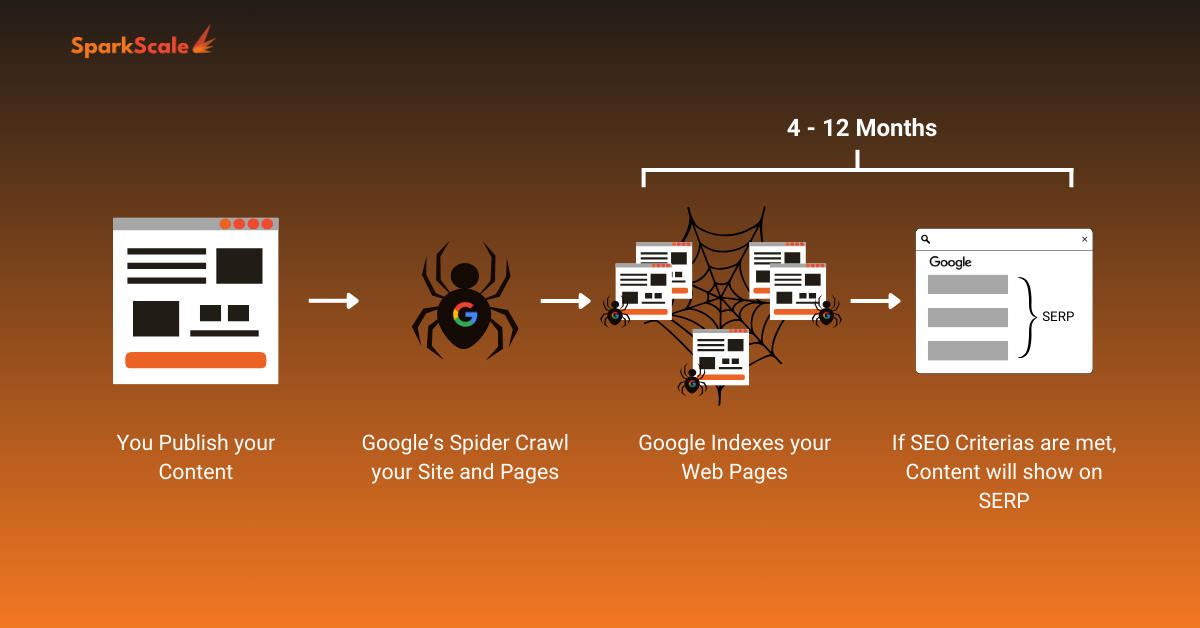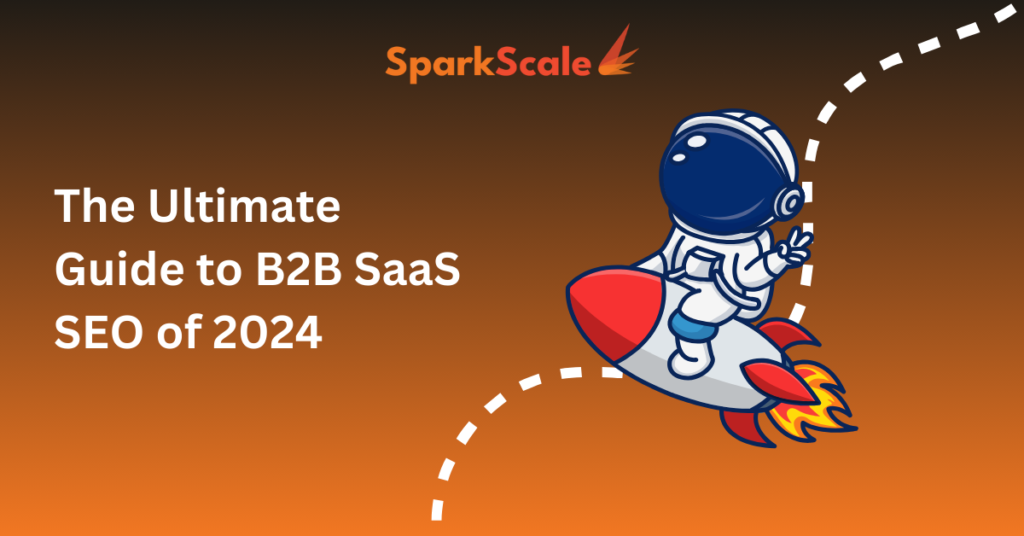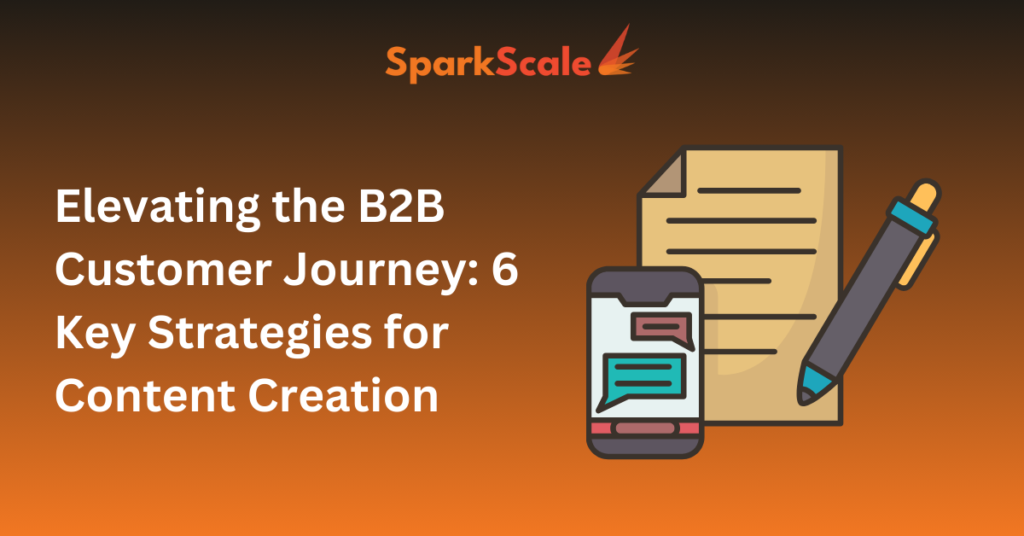The Ultimate Guide to B2B SaaS SEO of 2024
Introduction: How important is SEO for your B2B SaaS company?
Hey there! Whether you’re a B2B SaaS business owner or a marketing specialist tasked with optimizing your company’s website, you’re in the right place. In this detailed B2B SaaS SEO guide, you’ll discover why SEO is crucial, especially if you’re running a software company aiming for long-term organic growth.
SEO can be cost-effective when done correctly in-house, but it can also become expensive if outsourced without proper guidance. That’s why I’ve put together this guide to help you achieve successful SEO results without bouncing from agency to agency and spending thousands of dollars on empty promises and unrealistic expectations.
How Long Does it Take to Get Results from Your Website?
The time frame for seeing results depends on several factors: the effort you’re willing to invest, the competitiveness of the keywords you’re targeting, and the quality of your content.

It typically takes 4-12 months for SEO to work, according to Google.
Additionally, off-page SEO tactics play a significant role, which we will explore later in this guide. So please stick with me to go through the strategies and tactics that will set your B2B SaaS website to a successful organic lead generation machine.
By following these best practices and continually optimizing your strategy, you can stay ahead of the competition and ensure your B2B SaaS business thrives in the digital landscape. Here’s to a future where your organic search efforts pay off with increased visibility, higher lead generation, and sustained business growth.
Need Help with your SEO?
Understanding B2B SaaS SEO
What is B2B SaaS SEO?
B2B SaaS SEO involves optimizing your website to attract and convert business clients looking for software solutions. Unlike traditional SEO, it requires a nuanced understanding of long sales cycles, complex decision-making processes, and highly specific search intents. By focusing on these aspects, B2B SaaS companies can create a steady flow of warm leads to their website.
EEAT Framework
For starters, use the EEAT (Experience, Expertise, Authoritativeness, Trustworthiness) framework and insights from top-performing articles. This framework is crucial for quality article writing as per the Search Quality Evaluator Guideline created by Google.
- Experience
- Expertise
- Authoritativeness
- Trustworthiness
Keyword Research and Strategy
Asking Your SDRs
Start by engaging with your Sales Development Representatives (SDRs). Identify the most common questions, problems, and objections that prospects have. This information is invaluable for keyword research and content creation. For example, if SDRs frequently hear questions about integration capabilities, keywords like “how to integrate CRM with accounting software” become prime targets.
Long-Tail Keywords
Long-tail keywords are specific phrases that users are likely to search for when they are closer to making a purchase. These keywords often face less competition and have higher conversion rates. Examples include “project management software for remote teams” or “Best CRM for B2B startups.”
Use SEO tools like Google Keyword Planner, Ahrefs, and Moz to identify these keywords and verify their search volumes.
You’d want to research these keyphrases by applying a focused keyphrase. For example:
- Project management software with automation for remote teams. Focus keyword: Project Management Software for Remote Teams

*Source: Ahrefs
- CRM under 10$ per month for B2B SaaS startups. Focus: Best CRM for B2B startups.

*Source: Ahrefs
On-Page SEO
Technical SEO
Technical SEO forms the backbone of your strategy. Your on-page B2B SaaS SEO involves optimizing the backend of your site to ensure that search engines can crawl and index your pages effectively. Here are some crucial aspects:
Optimize Page Speed: Compress images, reduce the number of redirects, and leverage browser caching. Faster load times enhance user experience and improve your rankings. For instance, a site that loads within 2 seconds is likely to retain more visitors than one that takes longer.
Mobile Responsiveness: With a significant portion of traffic coming from mobile devices, ensuring your site is mobile-friendly is non-negotiable. Use responsive design and avoid intrusive interstitials that can frustrate users. Google’s Mobile-Friendly Test tool can help you identify areas for improvement.
Proper URL Structure: A clean, well-organized URL structure helps search engines understand your site’s hierarchy and improves crawlability. For instance, use simple and descriptive URLs like “example.com/best-crm-for-startups.”
Content Optimization
Creating high-quality, informative content is critical for engaging your audience and improving your search rankings. Adhering to the EEAT framework, as seen above, ensures your content is credible and valuable.
- Expertise: Demonstrate your industry knowledge through detailed guides, whitepapers, and case studies. For example, an in-depth guide on “Implementing AI in Customer Support” can position you as an industry expert.
- Authoritativeness: Showcase testimonials, case studies, and expert endorsements. These elements build trust and validate your expertise. Including quotes from industry leaders or featuring partnerships with reputable organizations can enhance your authority.
- Trustworthiness: Provide transparent information about your company, such as clear privacy policies and secure payment options. Including certifications and adhering to data protection regulations can also bolster trust.
On-Page Structure
A well-structured page is essential for both user experience and SEO. Here’s a recommended structure:
- Title: Use a compelling and keyword-rich title. For instance, “Top CRM Solutions for Small Businesses in 2024” immediately conveys the content’s relevance and target audience.
- Answer the Query: Address the main question or topic immediately. This not only satisfies user intent but also improves your chances of ranking in featured snippets.
- CTA Above the Fold: Place a clear call-to-action early on the page to capture leads. Examples include “Get Your Free Demo” or “Start Your Free Trial Today.”
- Social Proof: Include testimonials and case studies to build trust. Real-life success stories can significantly influence potential clients.
- Valuable Content: Offer in-depth information and actionable insights. Detailed blog posts, how-to guides, and video tutorials can enhance user engagement and retention.
- Process Details: Explain how your solution works in a step-by-step manner. This helps prospects understand the benefits and applications of your software.
- Why Choose You?: Highlight your unique selling points. Whether it’s superior customer support, innovative features, or competitive pricing, make sure these are prominently displayed.
- FAQs: Answer common questions to address any remaining concerns. This can also reduce the burden on your support team by providing immediate answers to frequently asked questions.
- Client List: Showcase your clients to build trust. Featuring logos of well-known companies that use your software can significantly boost credibility.
Off-Page SEO
Building High-Quality Backlinks
High-quality backlinks are essential for boosting your site’s authority and improving search rankings. Here are some effective strategies:
- Guest Posting: Write valuable articles for reputable industry blogs. This not only provides backlinks but also positions you as a thought leader in your field. Ensure that the blogs you choose are relevant and have a high domain authority.
- Industry Partnerships: Collaborate with complementary companies for mutual backlink opportunities. For example, partnering with a company that offers complementary services can be beneficial for both parties.
- HARO: Use Help a Reporter Out to gain authoritative mentions and links. This platform connects you with journalists looking for expert quotes, providing valuable backlinks and media exposure.
Leveraging Social Media and Thought Leadership
Social media platforms are powerful tools for building your brand’s authority and acquiring backlinks. Here’s how to effectively leverage social media and thought leadership:
- Social Media Engagement: Regularly share insightful and valuable content on platforms like LinkedIn, Twitter, and Facebook. Engage with industry influencers and participate in relevant discussions. This can increase your content’s reach and attract backlinks from other authoritative sources.
- Thought Leadership Content: Publish in-depth articles, whitepapers, and eBooks that showcase your expertise. For example, a comprehensive whitepaper on “The Future of AI in B2B SaaS” can position you as a thought leader and be widely shared within your industry, attracting backlinks and increasing your authority.
Content Creation and Optimization
Developing Customer Personas
Understanding your target audience is crucial for creating effective SEO content. Develop detailed customer personas to guide your keyword research and content creation efforts.
-
- Identify Key Characteristics: Determine the job titles, responsibilities, and pain points of your target audience. For instance, a persona for a COO of a mid-sized eCommerce firm might focus on operational efficiency and scalability.
-
- Tailor Content to Personas: Create content that addresses the specific needs and questions of each persona. This ensures your content is relevant and engaging for your target audience.
Creating SEO-Optimized Blog Content
Once you have your keywords, it’s time to create comprehensive blog posts that address the search intent. Here’s how to optimize your content:
-
- Research and Plan: Use tools like Google Keyword Planner, Ahrefs, or Moz to identify high-volume keywords. Organize these keywords into clusters around specific topics.
-
- Content Depth: Create detailed, informative posts that thoroughly cover the topic. Longer, comprehensive content tends to perform better in search rankings. For example, if you’re writing about “CRM software for small businesses,” cover everything from benefits, features, and implementation tips to case studies and FAQs.
-
- Optimize for SEO: Include your target keyword in the title, headers, and throughout the content. Use related keywords and synonyms to enhance relevance. For instance, if your main keyword is “B2B SaaS SEO,” related keywords could be “B2B SEO strategies,” “SaaS SEO techniques,” and “SEO for software companies.”
-
- Engaging Format: Use a mix of text, images, videos, and infographics to make your content more engaging. This can increase time spent on page and reduce bounce rates. Interactive content such as quizzes, polls, and calculators can also enhance user engagement.
Utilizing Schema Markup
Implement schema markup to enhance your content’s visibility in search results. Rich snippets can increase click-through rates by providing users with more information upfront.
-
- Types of Schema Markup: Use different types of schema markup based on your content. For instance, FAQ schema can be used for question-based content, while product schema is suitable for software features and pricing. This structured data helps search engines understand your content better and can result in enhanced search listings.
-
- Implementation: Use tools like Google’s Structured Data Markup Helper to generate and implement schema markup on your site. Regularly test your structured data with Google’s Rich Results Test to ensure it’s functioning correctly and providing the intended enhancements in search listings. By marking up your pages with schema, you make it easier for search engines to understand and index your content, leading to improved visibility and potentially higher click-through rates.
Conclusion
Implementing a robust B2B SaaS SEO strategy can significantly reduce your dependency on paid ads, drive organic traffic, and increase conversions. By focusing on technical SEO, content optimization, and high-quality backlinks, you can build a strong online presence that attracts and converts leads effectively. Remember, SEO is a long-term investment, but with consistent effort and the right strategy, the results will be well worth it.



